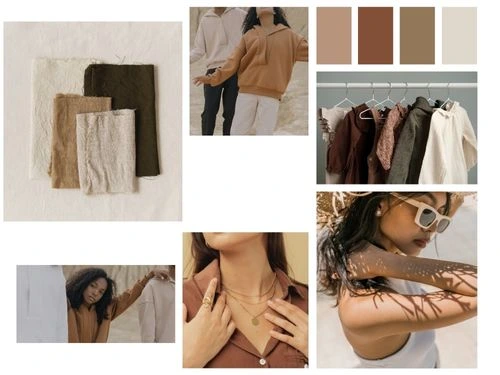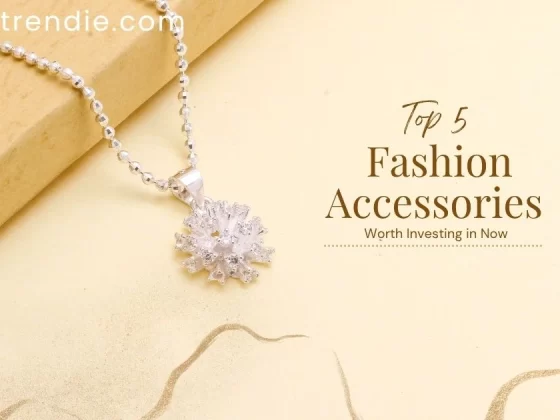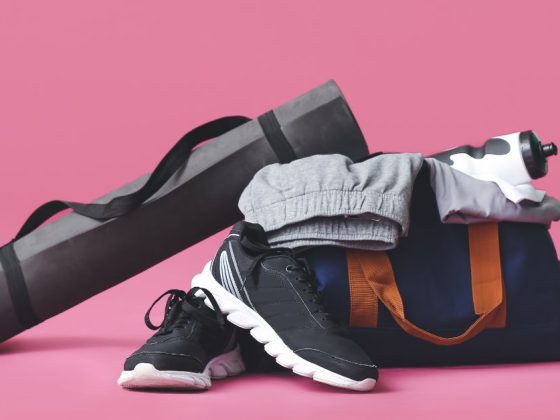 The fashion industry has always been known for creativity, innovation, and self-expression. But behind all that glamour lies a serious environmental issue. The industry is one of the largest contributors to global pollution, from excessive water use in cotton farming to harmful dyes that contaminate rivers and waste that piles up in landfills. Thankfully, a new generation of fashion brands is stepping up to change the narrative. These are the carbon-neutral pioneers proving that fashion can be stylish and sustainable at the same time.
The fashion industry has always been known for creativity, innovation, and self-expression. But behind all that glamour lies a serious environmental issue. The industry is one of the largest contributors to global pollution, from excessive water use in cotton farming to harmful dyes that contaminate rivers and waste that piles up in landfills. Thankfully, a new generation of fashion brands is stepping up to change the narrative. These are the carbon-neutral pioneers proving that fashion can be stylish and sustainable at the same time.
What Carbon-Neutral Fashion Really Means
When a brand claims to be carbon-neutral, it means it has measured the amount of greenhouse gases it emits, taken steps to reduce as much as possible, and then offset the rest through verified programs such as reforestation or renewable energy projects. The goal is to reach a net-zero carbon footprint.
This process usually covers three main areas. First are direct emissions from operations, such as factories and offices. Second are indirect emissions from purchased energy, such as electricity. Third and often the biggest challenge is emissions generated throughout the supply chain, including raw materials, shipping, and product disposal.
Becoming carbon-neutral is not simple. It requires transparency, accurate data, and a willingness to rethink long-standing production habits. Yet, for the brands that are serious about it, the results speak volumes. They are redefining what it means to run a responsible business while inspiring consumers to make more mindful choices.
Why Carbon-Neutral Fashion Matters
The environmental cost of clothing is immense. Every year, millions of tons of textiles are produced, shipped, and discarded, leaving a trail of emissions behind. By committing to carbon-neutrality, fashion brands are taking real accountability for their environmental impact.
When brands reduce emissions, they begin to rethink every step of their process. That means using better materials, cleaner manufacturing, and more efficient shipping. These actions go beyond marketing, creating lasting change that benefits both people and the planet. Consumers also benefit from having more options that align with their values, showing that sustainability and style can coexist beautifully.
Leading Carbon-Neutral Fashion Brands
Here are some fashion brands that are making genuine strides toward carbon neutrality and reshaping the industry along the way.
Reformation
Reformation is one of the most recognized sustainable fashion brands in the world. The company has built its reputation on transparency, showing exactly how much water, carbon, and waste go into each piece it produces. It uses recycled and deadstock fabrics and focuses on minimizing the use of materials with high environmental impact.
What makes Reformation stand out is that it manages to stay fashionable while being responsible. Its pieces are chic, modern, and wearable, proving that eco-conscious clothing can be just as appealing as mainstream fashion.
Vuori
Vuori is a California-based lifestyle and activewear brand that has earned Climate Neutral certification. It uses recycled and responsibly sourced materials such as organic cotton and repurposed polyester from plastic bottles.
The brand has also pledged to reduce its emissions by nearly half by 2030, a goal that requires constant improvement and accountability. Vuori shows that even casual wear and athletic apparel can play a significant role in building a sustainable future.
MATE the Label
MATE the Label is a Los Angeles brand focused on clean materials and ethical manufacturing. All production takes place locally, reducing transportation-related emissions and supporting community jobs.
Their fabrics are made from natural, non-toxic materials such as organic cotton and Tencel. MATE has been Climate Neutral certified since 2020 and is a proud member of 1% for the Planet, donating a portion of its revenue to environmental causes.

The result is a line of clothing that feels good, looks good, and does good. The brand proves that sustainability works best when it’s simple, local, and transparent.
Wolven
Wolven brings sustainability into the world of activewear with bold prints and vibrant designs. The brand transforms recycled plastic bottles into soft, breathable fabrics for yoga wear, swimsuits, and casual pieces.
Wolven’s focus on inclusivity and self-expression adds another layer to its mission. It’s not just about being environmentally conscious, it’s also about creating fashion that celebrates diversity and individuality while reducing waste.
MUD Jeans
MUD Jeans is a Dutch denim company that has taken circular fashion to another level. It allows customers to lease jeans for a year and return them for recycling afterward. The old jeans are then used to create new ones, keeping materials in use rather than sending them to landfills.
MUD Jeans also uses recycled cotton and water-saving dyeing methods. Their approach combines innovation with practicality, showing that even one of fashion’s most resource-heavy items, denim, can become sustainable through creative thinking.
Common Threads Among Carbon-Neutral Brands
What do these brands have in common? Several things tie them together, and they serve as a blueprint for others looking to follow in their footsteps.
- Transparency: They clearly communicate their environmental goals, share progress reports, and invite customers to hold them accountable.
- Better Materials: From recycled polyester to organic cotton, they focus on reducing impact through smarter sourcing.
- Redesigned Production: Many brands shorten their supply chains or switch to cleaner, more efficient factories.
- Offset Programs: They compensate for remaining emissions through credible carbon offset projects.
- Aesthetic Appeal: Sustainability does not come at the cost of style. Each of these brands proves that eco-friendliness can still be fashionable.
The Challenges of Carbon-Neutral Fashion
While the progress is promising, there are still challenges to overcome. Measuring and managing emissions across the entire supply chain can be complicated, especially for large global brands. It’s not always easy to track the origins of materials or how factories operate.
Another issue is over-reliance on carbon offsets. While offsets play a role, they are not a substitute for absolute reduction. Brands must prioritize cutting emissions first and use offsets only as a final step.
Then there’s the issue of affordability. Sustainable, carbon-neutral clothing often costs more to produce, making it less accessible to the average consumer. However, as technology and materials improve, prices are expected to become more competitive.
Lastly, consumer habits also play a role. No matter how sustainable a garment is, its impact increases if it’s worn only a few times and then discarded. Encouraging people to buy less, care more, and extend the life of their clothes is part of the broader solution.
Why Carbon-Neutral Fashion Is More Than a Trend
Some might dismiss carbon-neutral fashion as a passing trend, but it’s becoming an industry standard. Several forces are driving this shift. Governments are introducing stricter environmental regulations. Investors are pushing for greater transparency. Consumers, especially younger generations, are demanding authenticity and responsibility from brands.
Advancements in technology are also helping. Innovative materials like lab-grown leather, plant-based fabrics, and carbon-capture textiles are reshaping how clothes are made. These innovations are turning sustainability from a niche idea into a practical and profitable business model.
Fashion rental, resale, and circular systems are also gaining ground. Instead of owning large wardrobes, more consumers are choosing to rent or buy pre-loved items, reducing waste and carbon emissions. Brands that adapt to these changes are positioning themselves for long-term success.
How Content Writers and Consumers Can Support Change
Writers and consumers play a huge role in shaping the narrative around sustainability. As a content writer, you can educate audiences about the value of carbon-neutral fashion by focusing on measurable results and genuine stories.
When writing about sustainable fashion, include specific details about what a brand is doing differently. Mention their reduction targets, recycling methods, and transparency efforts. Explain how their choices make a measurable difference in emissions.
For consumers, supporting carbon-neutral fashion doesn’t always mean spending more. It starts with being more mindful, choosing quality over quantity, checking labels, researching brands, and taking care of what you already own. Small actions like washing clothes less often, repairing items, and donating responsibly all help reduce your personal footprint.
The Future of Carbon-Neutral Fashion
The movement toward carbon neutrality in fashion is still in progress, but the direction is clear. In the coming years, expect to see more brands adopt carbon accounting, publish detailed sustainability reports, and invest in renewable energy for production.
Circular design principles will also play a bigger role. This means designing garments with the end of their life in mind, making them easier to recycle or compost. The rise of digital fashion and virtual clothing might even further reduce waste by minimizing physical production for marketing and entertainment.
Luxury brands, once slow to adapt, are now investing heavily in sustainability as part of their long-term strategy. Meanwhile, smaller independent labels are driving innovation by experimenting with local sourcing, regenerative farming, and zero-waste production.
Fashioning a Greener Future
The idea of carbon-neutral fashion is more than a buzzword. It represents a collective effort to reshape how fashion operates in a world facing climate change. It challenges brands to be accountable, encourages consumers to think critically, and pushes the industry toward a future that values both beauty and balance.
By supporting these initiatives, you are not just buying clothes; you are investing in the planet’s well-being. The next time you shop, remember that every purchase has power. Choosing a carbon-neutral brand means choosing progress, responsibility, and hope for a cleaner, greener future.
















